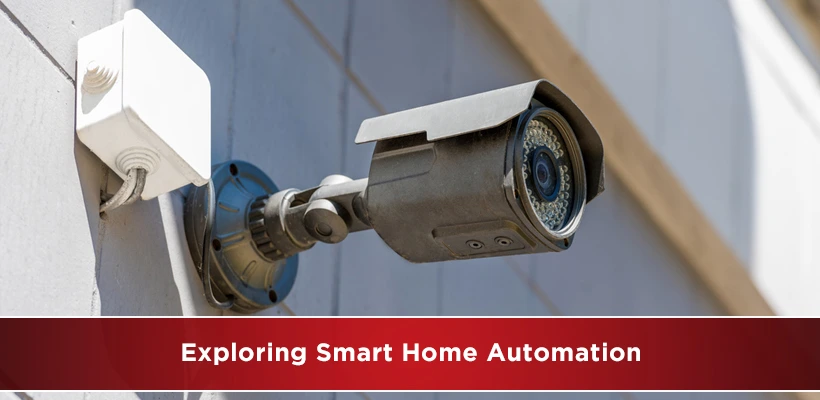
In today's fast-paced world, convenience and efficiency are at the forefront of our lives. Smart home automation is the epitome of this modern lifestyle, offering us the ability to control and monitor various aspects of our homes with just a few taps on our devices. In this comprehensive guide, we will explore the fascinating world of smart home automation, from its basics to its advanced applications. Join us on this journey of technological innovation and discover how it can transform your living space into a smarter, more efficient, and secure environment.
Exploring Smart Home Automation
What Is Smart Home Automation?
Smart home automation refers to the integration of technology into various aspects of your home to enhance convenience, security, energy efficiency, and overall quality of life. It involves connecting devices and systems to a central hub or network, allowing you to control them remotely through smartphones, tablets, or voice commands.
The Benefits of Smart Home Automation
- Convenience at Your Fingertips: Imagine adjusting your thermostat, lighting, and security system with a single tap on your phone. Smart home automation provides unparalleled convenience.
- Energy Efficiency: Save on energy bills by automating your heating, cooling, and lighting systems, ensuring they are only active when needed.
- Enhanced Security: Monitor your home in real-time, receive alerts, and even remotely lock doors or view security camera footage.
- Customization: Tailor your automation to suit your lifestyle. Set schedules, preferences, and even create unique scenes for different occasions.
- Increased Home Value: Smart homes are in demand, making your property more appealing to potential buyers.
The Evolution of Home Automation
The concept of home automation dates back to the early 20th century when electrical systems started becoming commonplace. However, it's in recent years that technology has truly revolutionized our homes.
How Does Smart Home Automation Work?
At the core of smart home automation is the Internet of Things (IoT). IoT enables devices to communicate and interact with each other over the internet. Here's how it works:
- Sensors and Devices: Various sensors and devices, such as smart thermostats, cameras, and lights, are installed in your home.
- Connectivity: These devices connect to a central hub or a Wi-Fi network, creating a seamless network of communication.
- Control: You can control these devices remotely through dedicated apps or voice commands using virtual assistants like Amazon Alexa or Google Assistant.
- Automation: Set up automation rules to trigger actions based on specific conditions, such as turning on lights when motion is detected or adjusting the thermostat based on your schedule.
Exploring the Possibilities
Smart Lighting
Smart lighting systems allow you to customize the ambiance of your home with ease. From adjusting brightness levels to changing colors, you can create the perfect mood for any occasion.
Home Security
Enhance the security of your home with smart locks, doorbell cameras, and motion detectors. Receive instant alerts and even grant access remotely to trusted individuals.
Entertainment and Media
Transform your living room into a home theater with voice-controlled audio and video systems. Stream your favorite content with the touch of a button.
Environmental Control
Smart thermostats and climate control systems not only keep you comfortable but also help you save on energy costs by optimizing heating and cooling.
Conclusion
Exploring smart home automation is like stepping into the future. The convenience, security, and energy efficiency it offers are undeniable. With the right devices and a little creativity, you can create a truly intelligent and responsive living space. Start your journey into the world of smart home automation today, and experience a new level of comfort and control in your home.
Call on (844) 777-6668 to choose smart home automation now!
FAQs
1. How secure is smart home automation?
Smart home systems are designed with security in mind. However, it's crucial to follow best practices, such as regularly updating firmware and using strong, unique passwords.
2. Can I integrate different brands of smart devices?
Yes, many smart home platforms support a wide range of devices from different manufacturers. Just ensure they are compatible with your chosen hub or network.
3. What if I lose my smartphone or internet connection?
Most smart home systems have fail-safes in place. You can usually control devices locally or through a backup method if your primary connection is lost.
4. Are smart homes accessible for people with disabilities?
Absolutely. Smart home automation can greatly improve accessibility by allowing voice commands and remote control of various home functions.
5. How can I get started with smart home automation?
Begin by identifying your needs and goals. Then, choose a central hub or platform that suits your preferences. Start with a few devices and gradually expand your smart home ecosystem.
6. Is smart home automation cost-effective?
While there is an initial investment, the long-term savings on energy bills and potential increase in home value make it a wise financial decision.